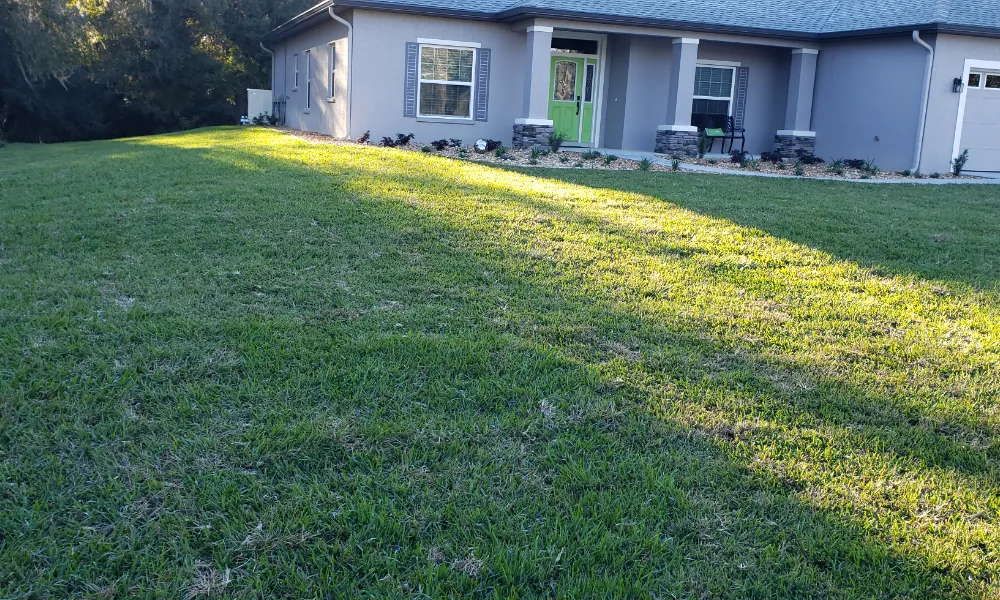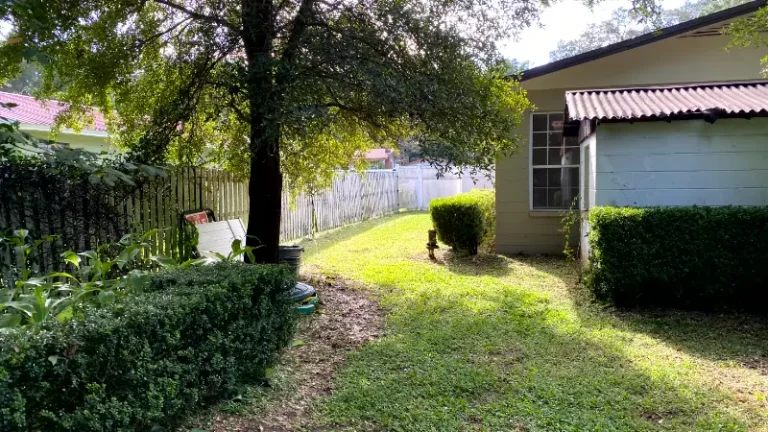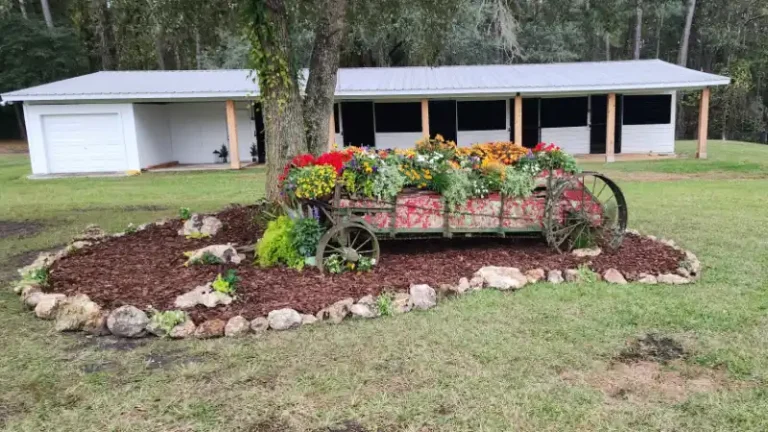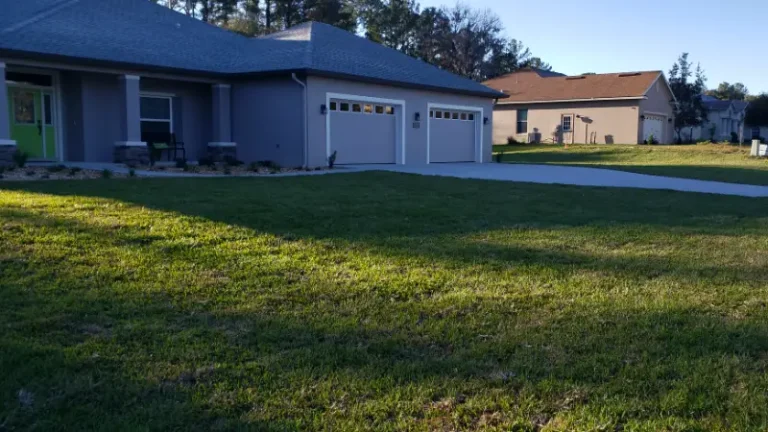How to Keep Your Lawn Healthy in Florida’s Climate: Watering, Fertilizing, and Mowing Tips
Florida’s warm climate, high humidity, and occasional heavy rains present unique challenges for maintaining a healthy lawn. With the right lawn care strategy, however, you can keep your grass lush and vibrant year-round.
In Central Florida, common grass types like St. Augustine, Bahia, and Zoysia thrive best when given proper attention. Here’s a seasonal guide to lawn care that covers essential watering, fertilizing, and mowing practices for healthy grass in Florida’s climate.
Lawn Care Tips for Florida’s Unique Climate
Florida lawns require consistent care due to the high temperatures and frequent storms. Following these tips will help your lawn stay green, resist weeds, and handle Florida’s environmental stressors.
1. Watering Your Lawn
Proper watering is key to keeping your lawn healthy, particularly during Florida’s hot summers.
How Much to Water
- Warm Season: During spring and summer, water your lawn two to three times a week, aiming for about 1 to 1.5 inches of water each week. Most Central Florida lawns need this amount to stay hydrated in the heat.
- Cool Season: As temperatures cool, reduce watering to once or twice a week. Overwatering can lead to fungal diseases, especially in our humidity climate.
Best Time to Water
Water early in the morning, ideally between 4 a.m. and 8 a.m. Watering at this time reduces evaporation, allowing roots to absorb moisture effectively.
2. Lawn Fertilizing for Optimal Growth
Regular fertilization supports vibrant color and encourages strong growth in Florida lawns, especially for St. Augustine, Bahia, and Zoysia grasses.
Choosing the Right Fertilizer
- Spring Fertilizing: Apply a slow-release, nitrogen-rich fertilizer in early spring to promote growth. For St. Augustine and Zoysia, this is particularly beneficial as these grasses respond well to nitrogen.
- Summer Fertilizing: Use a balanced fertilizer that includes potassium to help the lawn withstand heat and drought.
- Fall Fertilizing: Apply a fertilizer with lower nitrogen levels and higher potassium to strengthen roots before winter.
Be cautious about over-fertilizing, as this can lead to nutrient runoff during heavy rains and can also encourage weed growth.
3. Mowing Tips for Healthy Florida Lawns
Regular, correct mowing is essential for lawn health, especially in Florida’s fast-growing seasons.
Mowing Heights by Grass Type
- St. Augustine Grass: Keep at a height of 3.5 to 4 inches to protect from heat and prevent weed invasion.
- Bahia Grass: Maintain at about 3 inches to encourage drought tolerance.
- Zoysia Grass: Mow at a height of 2 to 3 inches for best results.
Mowing Frequency
- Spring and Summer: Mow weekly, as Florida grasses grow quickly during warmer months.
- Fall and Winter: Reduce mowing to every two weeks, or as needed, as growth slows.
Tip: Always mow with sharp blades to avoid tearing the grass, which can make it more susceptible to disease. Avoid cutting more than one-third of the grass blade at a time, as this can stress the lawn.
Seasonal Lawn Care Guide for Florida’s Climate
Here’s a breakdown of essential lawn services by season to keep your lawn healthy throughout the year:
Spring Lawn Care Tips
Spring is a critical time for preparing your lawn for the growing season. Increase watering frequency, apply a slow-release nitrogen fertilizer, and begin weekly lawn mowing. This is also a good time to aerate the lawn to improve root growth and water absorption.
Summer Lawn Care Tips
Summer in Florida can be challenging due to intense heat and humidity. Water regularly, mow weekly, and apply a balanced fertilizer with potassium to support drought resistance. Keep an eye out for pests and fungal diseases, which can be common in humid conditions.
Fall Lawn Care Tips
In fall, reduce watering and mowing frequency as growth begins to slow. Apply a lower-nitrogen fertilizer to strengthen roots before winter, and consider overseeding with ryegrass for year-round color if desired.
Winter Lawn Care Tips
Florida lawns don’t go fully dormant, but growth slows significantly. Mow and water as needed, based on growth. Take advantage of this slower season to check for weeds, and prune nearby shrubs and bushes.
Common Lawn Care Challenges in Florida
Florida’s unique climate poses specific challenges for homeowners. Understanding these issues can help you better manage your lawn and keep it healthy.
Heat and Humidity
High temperatures and humidity create ideal conditions for rapid grass growth but also increase the risk of fungal diseases, especially in the rainy season. Keeping grass at the proper height and avoiding excessive watering helps manage these challenges.
Weeds and Pests
Weeds and pests can be persistent, especially in Florida’s warm climate. Common weeds like crabgrass and pests such as chinch bugs can damage the lawn quickly. Regular lawn care, such as timely mowing, fertilizing, and weed control, helps to prevent these issues.
Soil Quality
Florida soils are often sandy, which can make it difficult for grass to retain moisture and essential nutrients. Regular fertilization and soil amendments can improve your lawn’s resilience and help prevent yellowing or patchy growth.
How to Control Weeds and Pests in Florida Lawns
To maintain a healthy lawn, proactive weed and pest control is essential.
Weed Control
Using a pre-emergent herbicide in early spring can prevent common weeds from taking hold. Applying mulch around garden beds and borders also helps minimize weed growth.
Pest Management
Pests such as chinch bugs, armyworms, and sod webworms can damage lawns if left unchecked. Keep an eye on any unusual brown patches or thinning grass, which could signal pest activity. If you notice signs of pests, consider contacting a professional lawn service that can apply safe, targeted treatments.
The Importance of Aeration for Florida Lawns
Lawn aeration is a process that removes small plugs of soil from the lawn, allowing air, water, and nutrients to penetrate the roots.
When to Aerate
In Florida, aeration is best done in late spring or early summer when the grass is actively growing. This process is especially beneficial for St. Augustine and Zoysia grass, which can become compacted in Florida’s sandy soil.
Benefits of Aeration
Aeration reduces soil compaction, encourages deeper root growth, and improves the effectiveness of fertilizing and watering. It’s an essential part of lawn care that many homeowners overlook but can have a noticeable impact on lawn health and resilience.
Benefits of Hiring a Professional Lawn Care Service
Maintaining a lush lawn in Florida’s climate takes time and expertise. A professional lawn service offers:
- Customized Care Plans: Lawn care professionals create a plan tailored to your grass type, soil quality, and specific needs.
- Consistent Maintenance: Regular lawn mowing, fertilizing, and pest control are handled on schedule, ensuring your lawn is always in top condition.
- Expert Knowledge: Trained professionals know how to address issues like brown patches, weeds, and pest infestations effectively, saving you time and frustration.
Choosing the Right Grass for Your Florida Lawn
The type of grass you choose can impact the long-term health and appearance of your lawn. Common grasses for Central Florida include:
- St. Augustine Grass: Known for its thick, lush look, St. Augustine thrives in full sun and partial shade but requires regular fertilizing and mowing.
- Bahia Grass: Low-maintenance and drought-tolerant, Bahia is great for larger properties or areas with limited irrigation.
- Zoysia Grass: Zoysia is durable and holds up well in high-traffic areas, making it ideal for families with children or pets.
Each grass type has its own strengths, so choosing the right one based on your yard’s needs will help ensure your lawn looks beautiful year-round.
Why Choose Professional Lawn Service in Gainesville and Ocala?
Maintaining a healthy lawn in Florida’s climate requires consistent care, a keen understanding of local grass types, and proper timing. Hiring a professional lawn service ensures that your lawn receives the right watering, fertilizing, and mowing routine based on the season, type of grass, and specific needs of your property. Lawnscape of CF provides tailored lawn care services that take the guesswork out of lawn maintenance, helping you achieve a lush, green lawn without the stress.
If you’re looking for reliable lawn care and lawn mowing services in Gainesville, Ocala, or surrounding neighborhoods, contact Lawnscape of CF today for a customized plan that keeps your lawn healthy, vibrant, and resilient all year long.






